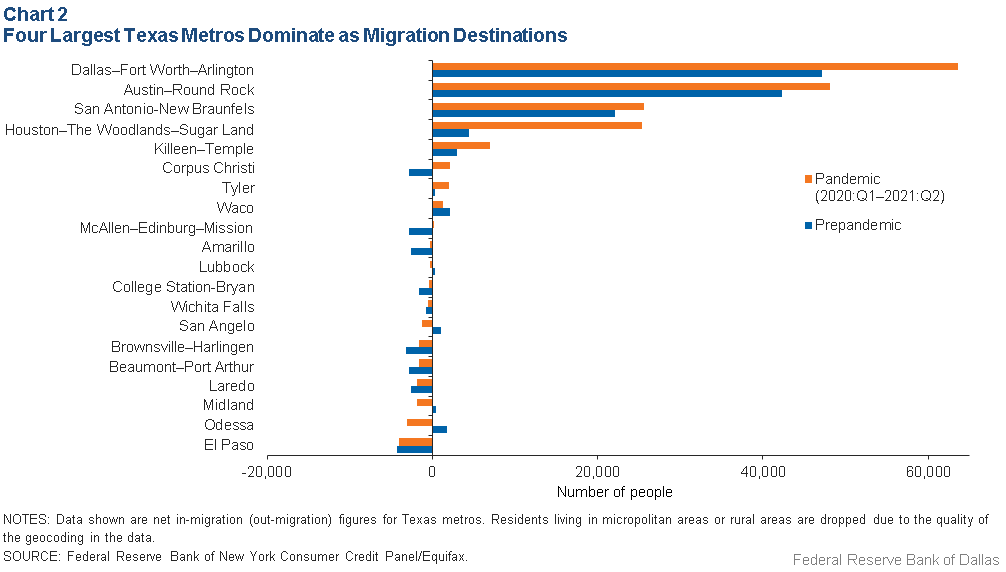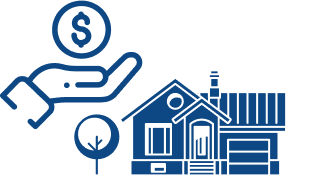What Will 2022 Bring to a Booming Texas Housing Market?
June 14th, 2022 / Author: Zachariah PetersonThe increasing influx of new residents to the state of Texas is transforming from a blessing to a crisis. The property values and rental costs are up, there is an exhaustion of space for building new homes, and the traffic jams are polluting the cities. Experts are talking about the aftermath of the pandemic-caused migrations.
For the last two years, high-cost coastal cities have been losing their citizens to Sun Belt states. This is a by-product of the work-from-home mentality caused by the pandemic. People are getting tired of their overpriced one-bedroom apartments in NYC, and they would rather be quarantined in a spacious home somewhere where the weather is nice.
The migrations to Texas from other states were on a constant rise even before the pandemic. A plethora of job opportunities, combined with a reasonably low cost of living is presumably what caused the migrations. As working from home removed physical constraints, such as going to the office, the migrations sped up beyond expectation.
According to the data about Texas’ residents’ relocation, the biggest influx in migrations is visible in four major cities - Dallas, Austin, San Antonio, and Houston. High earners leaving coastal cities, such as LA and NY, increased the demand for properties in Texas’ metros. The housing value skyrocketed by around 30%.

In the aforementioned cities, there is also an increase in bidding wars. More than 68% of all the offers in Dallas faced a bidding war in 2021, which is 15% more than in 2020. The stress of the bidding war draws away potential homebuyers, who then settle for a home in the less urban areas of Texas. This is how the booming of the housing market has spread out across the whole state.
Proportionately higher paychecks did not come with higher prices. Personal wage increase in the third quarter of 2021 was 4%, in comparison with the second quarter that had an increase of 21%. It is a decline in the personal financial growth of Texas residents.
Both potential homebuyers and residents seeking rentals are encountering dead-ends when it comes to finding a place to live in Texas. Homebuyers have to face refused offers, offers way over the asking price and creating distinguished ways to make an offer (eg. allowing a seller free use and occupancy).
Renters, on the other hand, have to wait months for an apartment, because of the long waitlists and costly rents. Some people that are usually, but not exclusively, low-income earners, tend to live a van or trailer life, in order to ease their economic situation and have more financial freedom.
The arrival of new residents has not only upped the property value, but it is also challenging the cities’ infrastructure, like hospitals, traffic, and maladapted public transportation, as well as putting pressure on home builders. Applications for residential building permits are up, but most cities’ and towns’ land cannot spread that much, so it is becoming hard to find enough space to build a house on.
With all of that in mind, experts predict that it is a matter of time the migration influx will slow down, and what will happen with the Sun Belt states’ housing market then? Realtors are advising home buyers to pay attention to the resale value of the property. If they decide to move during a post-booming market, they will lose money. There are a few factors that could determine the fate of property values.
There is the business model factor: is a post-pandemic worker willing to come back to the office? Considering that the highest paying jobs are concentrated around New York, Los Angeles, and other big coastal cities, will those people come back after the end of the pandemic? Companies are adapting to the flexible workplace models, so there will still be a lot of telecommuting even after the virus is gone.
Lifestyle can be a big factor in a post-pandemic change. Right now, it is more pleasant to have a spacious home, as people are socially distancing, but as soon as all the measures are removed, people may miss the metropolitan way of life.
It is expected that the Sunbelt states will have a population influx, and, thus, a rise in the prices of properties throughout 2022. Regarding Texas, it is questionable whether this state can keep the advantage in prices and costs, over the high-cost states.
With vaccines distributed across the US, the pandemic is, hopefully, coming to an end. This could mean that residents will be more willing to put their house on a market, which will increase the supply. Urbanists are saying that relieving price pressures could also come from expanding opportunities for affordable housing.
SELL
YOUR HOUSE
If you want to sell fast and are worried about how long the traditional process takes, and the commission and fees involved, consider working with SleeveUp Homes.





 view all blogs by this author
view all blogs by this author Cesar Gomez (83 blogs)
Cesar Gomez (83 blogs)